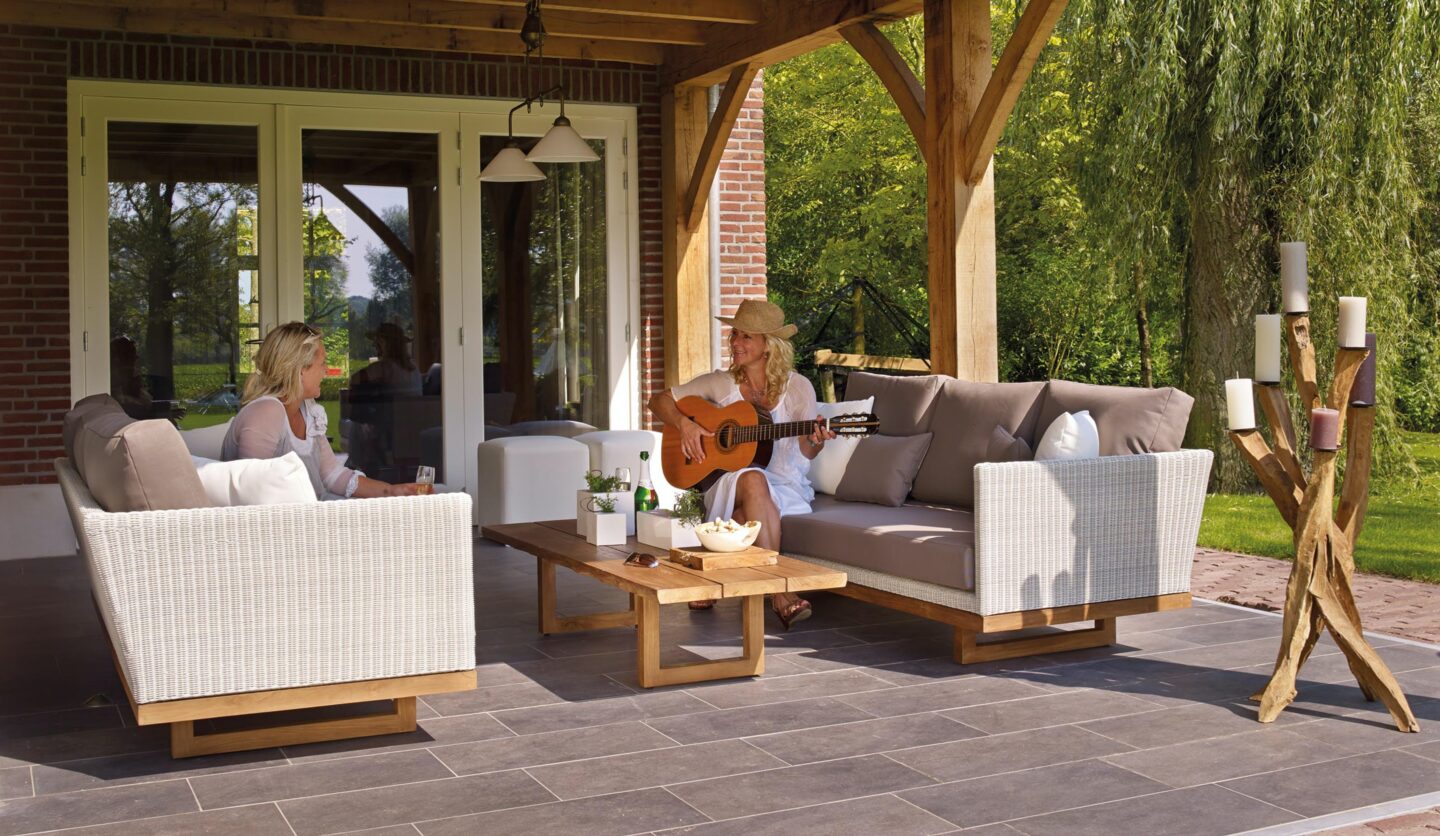Disclosure: This is a collaborative post.

What type of house do you live in? Is it the usual bungalow adorned with lush gardens, a garage and a couple of fancy bow windows? A single-family detached house that comes with a flared gable dormer and a flagstone patio? Or a large multi-family home that screams luxury? Regardless of the type of house you live in or its location, I am certain of one thing: you have a couple of outdoor furniture you need to protect, and you may need help in doing so.
Unlike your large cozy couch and the expensive furniture you have in your home, your outdoor furniture is pretty much exposed to the element. To ensure that these pieces of furniture don’t wither, you must take necessary measures to protect them.
What measures are we referring to? We have highlighted some below.
1. Know about the weather
The decision to park your car outside or in the garage will depend on how secure your environment is, right? The same applies to protecting your outdoor furniture. The approach you’d adopt will depend on the sort of climate in your area. Thus, the first step to protecting your furniture is to figure out what type of climate you will manage.
Where do you live? Do you live in an area that experiences constant rainfall? Or do you live in Washington, an area deemed the snowiest place in the U.S? Figuring out the weather of your location will help you tailor your furniture-protection strategies to suit your location and its weather. You should see good results afterwards.
2. Consider water repellent
Water repellent is a must-have for individuals who live in areas dominated by consistent rainfall and harsh weather. Like a shield, this tool stops water from soaking into your fabric. Aside from that, they also revive the evaporation of moisture from within the fabric while ensuring that it remains stylish and sparkling.
While there are a host of water repellents out there, it makes sense to go for one that can protect your fabric from all sorts of elements (water, mud, etc.) without altering their appearance. You can seek advice from a professional furniture maker in this regards.
3. Hold it in place
Thunderstorms are common in some areas, and they are usually associated with lightning, thunder, thick clouds, severe rain or hail, and strong nasty wind. If you happen to be living in such an area prone to this short-lived weather disturbance, you should plan for strong winds of 22 to 55 miles per hour (average). Such a wind speed could lift your outdoor furniture and distribute them around the neighborhood (they usually end up in pieces, of course).
To avoid a situation where you see your patio chair scattered on your neighbor’s roof and your chair on the next street, it is best you consider holding your furniture in place. You can do this with the assistance of a furniture maker. Furthermore, always consider going for high quality patio furniture, as they are less likely to be tossed around and shattered by mild winds. Also, they can guarantee longevity and optimum comfort.
4. Store during off-season
The end of the fall season gives rise to the beginning of the winter season, characterized by a harsh plunging temperature that could wreak havoc on your furniture. During the winter season, I advise you to take no chances by deciding to leave your furniture outdoors. If you mistakenly do—probably out of ignorance—snow and cold temperatures will greatly reduce the quality and lifespan of your furniture.
To save money that would have been spent replacing damaged furniture, you must consider storing your outdoor furniture before the harsh winter season kicks off. Doing so will guarantee the longevity of your outdoor furniture and ensure that they stay in optimum shape.
5. Clean and cover
You cannot protect your furniture by leaving them dirty. Accumulated dirt coupled with exposure to sun rays, rainfall and other elements can result in the deterioration of your outdoor furniture.
After using repellent to protect your furniture from rainwater, proceed to clean it. Cleaning your furniture will help discard other air-based remnants. Also, worthy of note is that each furniture material calls for a different type of cleaning approach.
For instance, if your furniture is made of artificial resin or wicker, consider rinsing them monthly using cold or warm water. What if your furniture is made of hardwoods? In that case, you can wipe them down with a cleanser and warm water once a year. Finally, for metal furniture, clean them as you please using a cleanser and warm water to keep rust at bay.
Conclusion
The exterior of your home is as important as the interior. Thus, it is important that you care for those elements that spruce up your outdoor space. Your furniture, no doubt, adds a touch of functionality and a pleasing sense of order to your outdoor space, hence the need to ensure that they are well protected during all seasons.
Cover your outdoor furniture when they need to be covered. Clean them when they need to be cleaned and store them in your garage at the required time. Adopting the right approach in caring for your furniture will raise their lifespan and cut the need to spend unnecessarily.
